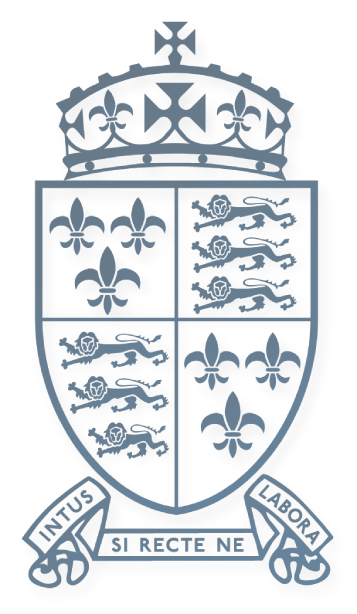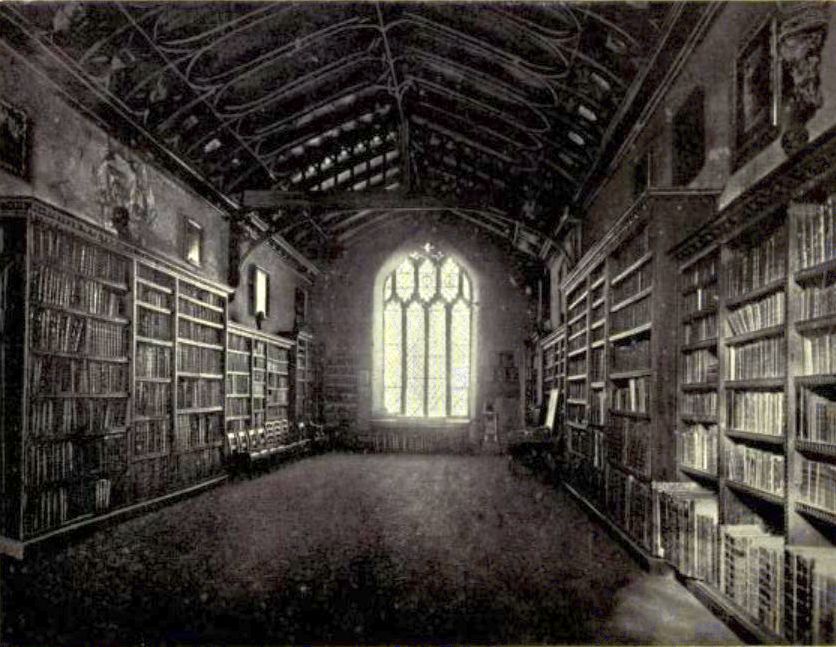
1596 – Founding of the School Library

Directions were given in Ashton's school ordinances that after sufficient lodgings had been provided for the schoolmasters, a library and gallery should be built and "furnished with all manner of books, mappes, spheres, instruments of astronomye and all other things apperteyninge to learninge".
As early as 4th September 1587, the Bailiffs asked permission from the master and seniors of St John's College, Cambridge to take money from the school-chest for this purpose. However, although permission was immediately given, work does not seem to have begun on these buildings until the year 1594-95, and they were not completed before the latter part of 1596.

Photos: original library in the Old Schools (above B&W photo from Fisher’s Annals of Shrewsbury School; colour photo below shows the room in the current town library)
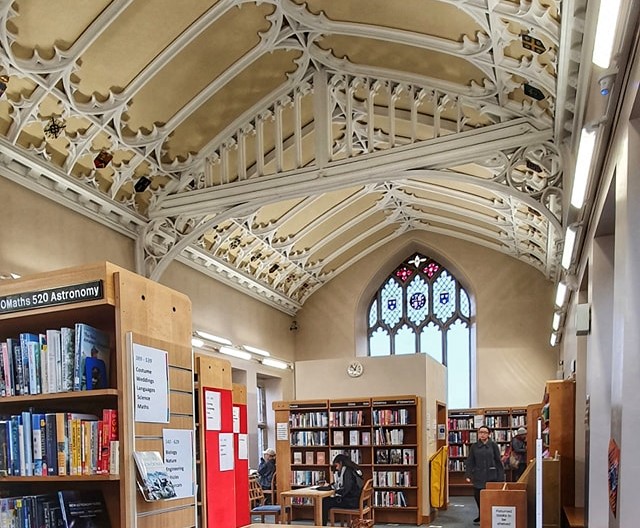
Nevertheless, many books and other presents had already been given for the furnishing of the library by former pupils and other friends of the School, and the names of the donors are faithfully recorded in the register of benefactors to the School Library, which was commenced by James Meighen (Headmaster, 1583-1635) and continued by subsequent masters.
The first of these gifts, of which any mention is made, was "Mullinax his terrestriall globe in a frame with a standing base covered with greenish buckrome”. The globe was made by the first English globe-maker, Emery Molineux, and presented in 1596 by the Revd Thomas Laughton, B.D., curate of St Mary's Church and Public Preacher in the town of Shrewsbury.
Photo: Molineux’s globe [to be sourced]
No further gifts are recorded until 1606, but from that date the library grew quickly by gift, bequest and purchase. The stock was always intended to include all learning, not merely the limited grammar school syllabus. It was thematically catalogued from the outset and its growth can be gauged from accession rolls, donors’ books and successive catalogues.
The library was fitted out with presses and chained like a contemporary Oxford or Cambridge college library. The school accounts show the purchase in 1607 of 11 dozen iron chains, at a cost of five pennies each, which gives some idea of the probable number of books in the Library at that time.
The chains were removed in 1737 when it became a borrowing library.
Photo: Part of the chained library that is still in existence [to be sourced]
Caption: Part of the original chained library is still in use in the Taylor Library today.
On 24th June 1612, the Bailiffs asked permission from St John’s College to spend £100 in furnishing the library with books. The School Register records that on 1st October 1612, the Bailiffs and schoolmasters had wine and cakes in the library. But the college authorities appear to have objected to money being spent on books unless the Bailiffs would be explicit as to their intention of founding exhibitions at St John's for Shrewsbury scholars, and it was not until May 1616 that they gave their consent to the proposed expenditure.
In 1616-17 the School accounts show nearly £80 (the equivalent of about £20,000 today) spent on the purchase of books.
By 1640, the School had acquired some 40 medieval manuscripts, most of which survive, including a fine 12th century Gradual from Haughmond Abbey and the Lichfield Processional with its unique liturgical English plays of circa 1430 and polyphonic music.
Photos: treasures from the Ancient Library [to be sourced]
Particular treasures are a fine collection of bookbindings ranging from the 12th century to the present day, some 60 books printed before 1500 including John Gower's 'Confessio Amantis' printed by Caxton in 1483, and a representative collection of 17th century scientific, medical and natural history books, mostly drawn from the libraries of two Shrewsbury doctors and bequeathed in 1688 and 1712.
The School bought Newton's 'Principia' on publication in 1687.
Photo: Newton’s Principia [to be sourced]
In 1766 the Revd Dr John Taylor (Old Salopian) bequeathed some 3,500 books to the School, more than doubling its size.
Notable visitors to the Library over the centuries include Dr Johnson, who, according to his Diary of a Journey into North Wales, visited on 10th September 1774.
The Ancient Library Borrowing Book records that in 1812 Lucien Bonaparte, brother of Napoleon, borrowed a large Volume of the Works of Pindar, the ancient Greek lyric poet from Thebes. This was during the period when he was living in exile 30 miles south of Shrewsbury, in Ludlow.
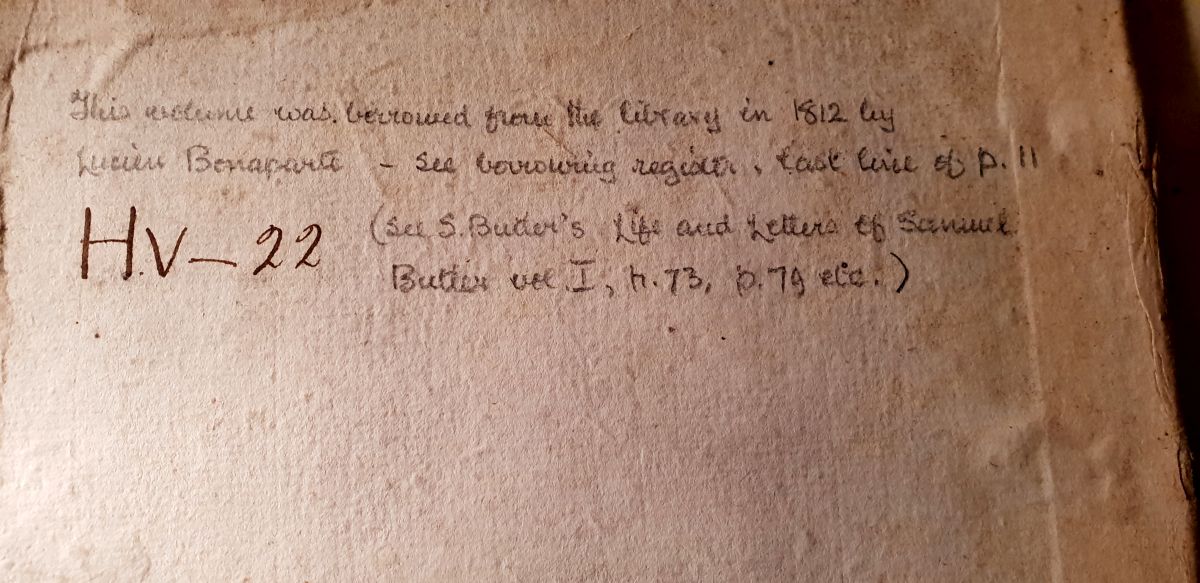
Photos: Ancient Library Borrowing Book with Lucien Bonaparte’s name
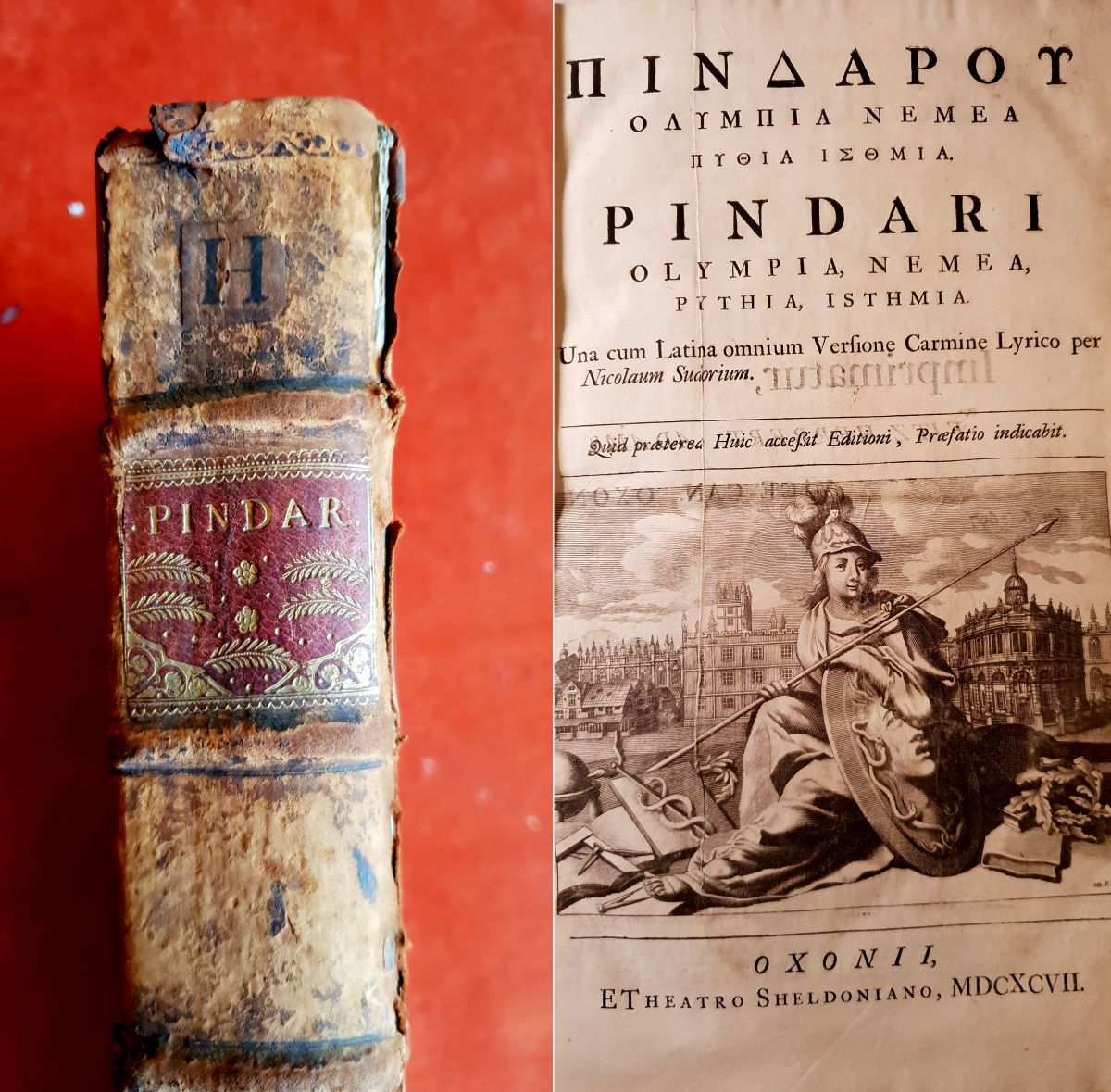
Works of Pindar (the book he borrowed)
The Ancient Library has survived intact throughout its 420-year history, despite a surprising and secret attempt in 1907 by the Governors to sell at Sotheby’s Gower’s Confessio Amantis, printed by Caxton in 1483, the most valuable book in the Library. This is recorded by J. Basil Oldham in his History of Shrewsbury School 1552-1952:
“By a curious chance the fact leaked out, and an astonishing indignation showed itself among boys as well as Old Boys. On a letter appearing the London press suggesting that a fund might be raised to redeem it, the boys alone, on their own initiative, raised £140 in 24 hours (about £18,000 at today’s prices). The Old Salopians took further steps and… they handed over to the Governors some £1,100 (about a fifth of its probable present value) on condition that the book was withdrawn from the sale, and, by a deed poll, made inalienable in perpetuity.”
In 1916, the Ancient Library was moved from its room in the Main School Building to the new Moser Building.

